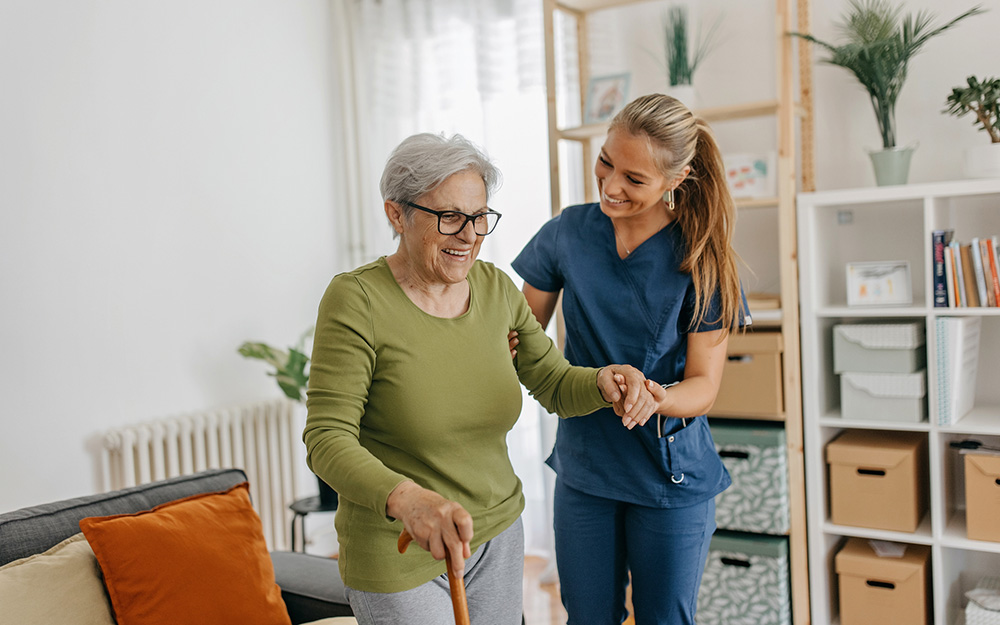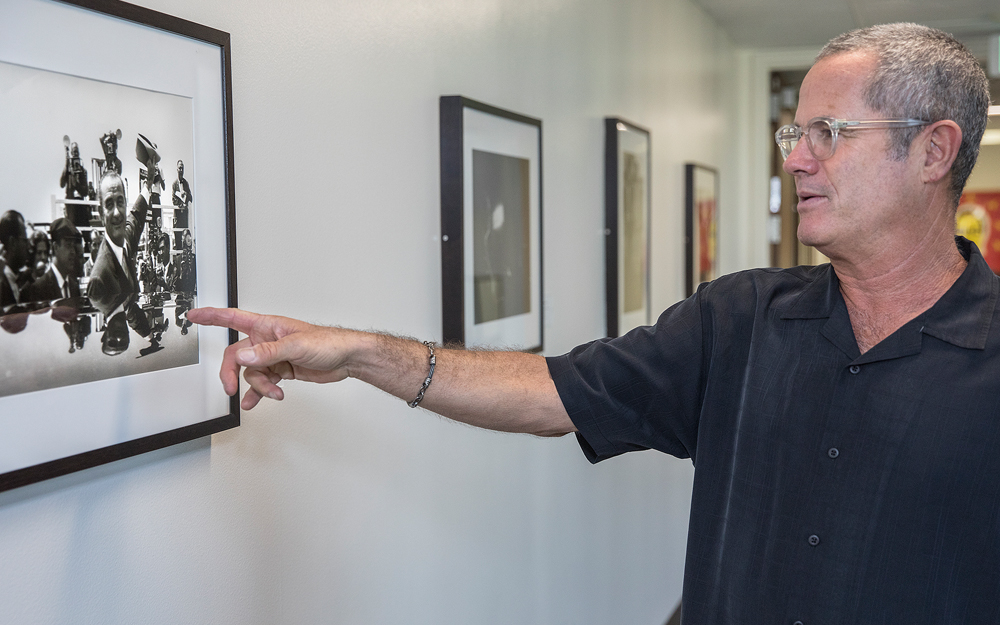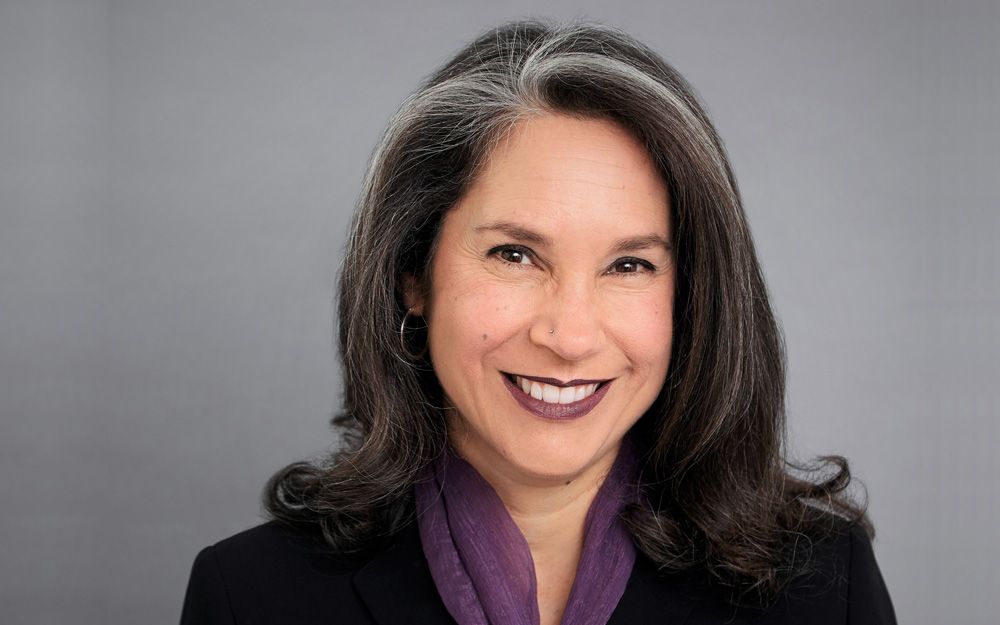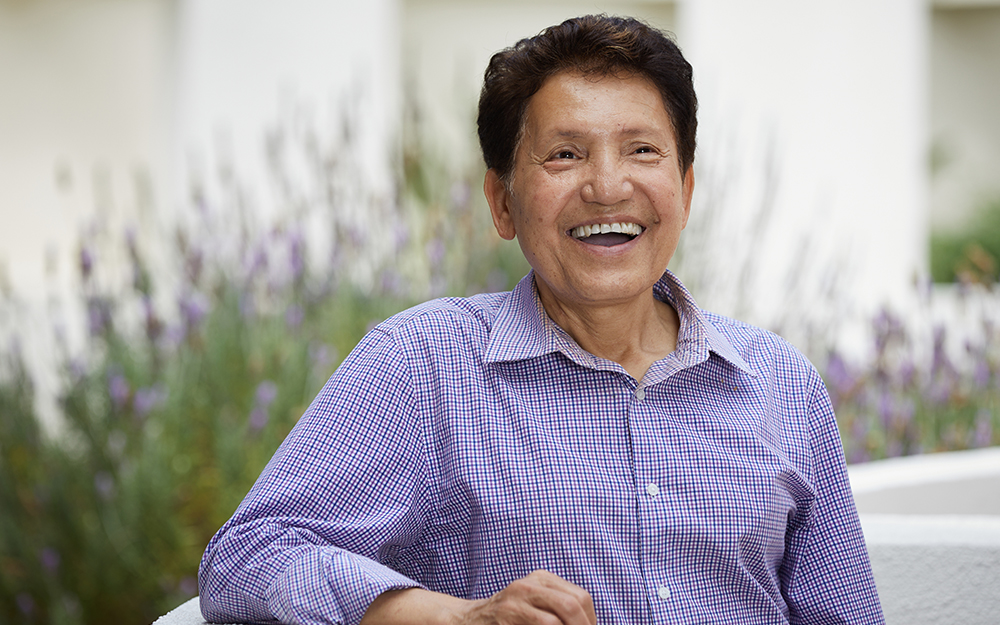Lifelong Journey: A Scleroderma Patient and Her Doctor
Date
June 27, 2023

Date
June 27, 2023
Credits
Medical providers featured in this article
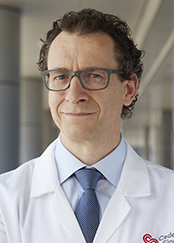
In Brief
{{cta-block}}
In 2007, Terecita Delacruz had just begun a career as a medical assistant and was raising three small children when a colleague asked why her hands so often turned purple.
Delacruz had ignored the symptom since she was a teenager. But the co-worker, a doctor, encouraged her to get it checked out. Bloodwork revealed a dizzying diagnosis: scleroderma, a chronic autoimmune condition that attacks the joints, skin and organs. Her hands had been purple because they weren’t getting enough blood due to the debilitating condition, which progresses throughout the body over time and requires intensive treatments and monitoring.
Delacruz had never heard of scleroderma and quickly learned that it would change everything about her life. But thanks to a strong support system and her doctor, scleroderma expert Francesco Boin, MD, Delacruz has never weathered the changes alone.
“I know I’m doing everything I can, and I know my doctor is doing everything he can. I never second-guess his treatment plans for me because I trust him.”
Deep partnerships
Delacruz, now a Cedars-Sinai patient, first sought care with a specialist near her home in Hollister, California. Her new love, and now husband, Armando, stuck by her side from the first appointment on.
The day she was diagnosed, Delacruz remembers releasing Armando from obligation, telling him, “I don’t know too much about this, but I do know that it will be debilitating. It’s going to get ugly, and I don’t know when. If you want to leave, you can leave.”
Armando, in turn, redoubled his commitment to her and her kids.
“We’re going to fight through this together,” he said.
Within a year, Delacruz developed gastrointestinal symptoms and trouble breathing. Over time, her skin and lungs tightened and scarred, and she was diagnosed with pulmonary fibrosis.
As her condition progressed, Delacruz lost her job and health insurance, and she had to find a new doctor.
“I panicked,” she said. “I was scared that the next doctor wouldn’t know how to treat me. I couldn’t imagine starting over from zero.”
But she found Boin, then based near her Northern California home. He listened closely with his full attention and emphasized his commitment to her health.
Scleroderma is complex, unpredictable and impacts each patient uniquely. Similar symptoms could be driven by different underlying causes, Boin said, so doctors must know their patients deeply.
“With this multisystem disease, there are so many nuances that need to be heard and understood,” he said. “My responsibility is to be fully present for my patients, and to pay attention to their symptoms and struggles—which are not only physical.”
Boin reassured Delacruz that he would be by her side for the long run. As Delacruz’s scleroderma shifts, she stays in close contact with Boin to adjust her medications and address side effects.
“Terecita has been a really good partner,” Boin said. “This is key. Forming deep relationships with our scleroderma patients is critical to helping us understand the clinical situation and to keeping the disease under good control.”
In 2019, when Boin told Delacruz he was moving his practice to Cedars-Sinai, where he is now director of Rheumatology and director of the Kao Autoimmunity Institute and Kao Multispecialty Scleroderma Program, Delacruz decided then and there she’d follow him to Los Angeles. Four or five times a year, she makes the one-hour flight for routine visits or infusions.
In the Newsroom: Scleroderma Awareness Month
{{providers}}
Family innovation
When Delacruz was diagnosed, she was desperate to keep her kids’ lives as they were.
“When they were babies, I didn’t know if I was going to make it, but they have always been my priority,” she said.
Families and caregivers need to understand the disease as well as patients do, especially as it begins to impair a person’s daily living, Boin said.
“It’s hard for patients to do this alone—to manage their care and face emotional and physical challenges,” Boin said. “Families need to understand that even when you have a break from physical ailments and suffering, psychologically, you still know the disease is there. The burden of having to deal with it can certainly take a big toll.”
Recently, Delacruz has developed joint inflammation and ulcers in her fingers, and she relies on her family for most of the housework: her children—Gladys, 23, Julian, 18, and Angel, 17—are always willing to help.
Even after Armando’s 13-hour workdays, he comes home ready to lend a hand.
“I couldn’t imagine what I would do without him,” she says. “If it wasn’t for my family, I don’t think I’d be here. They’re my motivation.”
Lifelong journey
Between appointments, Delacruz tries not to focus on her disease or how it will impact her life next. She relies on Boin’s expertise and dedication.
“I know I’m doing everything I can, and I know my doctor is doing everything he can,” Delacruz said. “I never second-guess his treatment plans for me because I trust him.”
For Boin, establishing such trust is his most significant goal.
“When I start to work with someone affected by scleroderma, it’s a lifelong journey together,” he said. “Ensuring patients know they’re not alone, even when they’re aware you may not have effective therapies, is central to caring for them.”
Sharing Support
When Delacruz was diagnosed with scleroderma, she cried every night for months. Today, she stays as positive as she can and shares what she’s learned with other patients in an online support group.
Find a doctor you trust: “I talk with a lot of patients who don’t have a relationship with their doctor, and it makes me feel so grateful that I have Dr. Boin,” Delacruz said.
Practice gratitude: On painful days, Delacruz tries to remain grateful that she can still breathe on her own. She knows she’ll need to use an oxygen tank one day, but she takes comfort that she’s not there yet.
Be present for the small things: Delacruz encourages patients in the early stages of their disease to distract themselves with little joys. When her children were small, she immersed herself in fun and easy family activities such as baking cookies, watching movies and coloring or painting. Today, she takes comfort in her granddaughters Sophia, 7, and Natalia, 10 months.
“Don’t focus on the thousands of tests we have to do or the hundreds of blood draws,” she said. “Just take it day by day and try not to think of everything that’s going to happen in the future. I have found in these 16 years that you can’t let worry consume you. I just try to soak up everything because I know there will be a time when things will really change, and I’ll have all these memories.”

